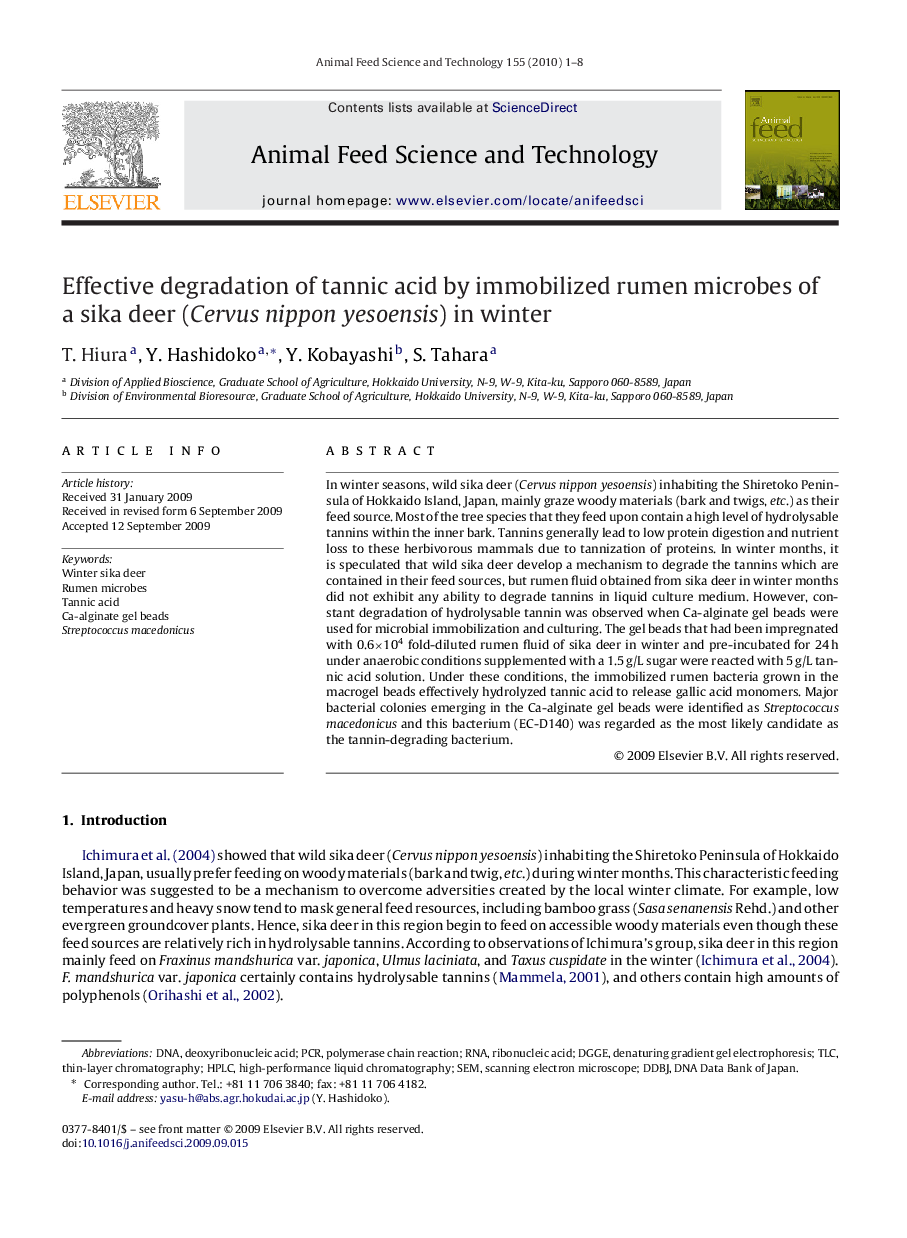| Article ID | Journal | Published Year | Pages | File Type |
|---|---|---|---|---|
| 2420437 | Animal Feed Science and Technology | 2010 | 8 Pages |
In winter seasons, wild sika deer (Cervus nippon yesoensis) inhabiting the Shiretoko Peninsula of Hokkaido Island, Japan, mainly graze woody materials (bark and twigs, etc.) as their feed source. Most of the tree species that they feed upon contain a high level of hydrolysable tannins within the inner bark. Tannins generally lead to low protein digestion and nutrient loss to these herbivorous mammals due to tannization of proteins. In winter months, it is speculated that wild sika deer develop a mechanism to degrade the tannins which are contained in their feed sources, but rumen fluid obtained from sika deer in winter months did not exhibit any ability to degrade tannins in liquid culture medium. However, constant degradation of hydrolysable tannin was observed when Ca-alginate gel beads were used for microbial immobilization and culturing. The gel beads that had been impregnated with 0.6×104 fold-diluted rumen fluid of sika deer in winter and pre-incubated for 24 h under anaerobic conditions supplemented with a 1.5 g/L sugar were reacted with 5 g/L tannic acid solution. Under these conditions, the immobilized rumen bacteria grown in the macrogel beads effectively hydrolyzed tannic acid to release gallic acid monomers. Major bacterial colonies emerging in the Ca-alginate gel beads were identified as Streptococcus macedonicus and this bacterium (EC-D140) was regarded as the most likely candidate as the tannin-degrading bacterium.
